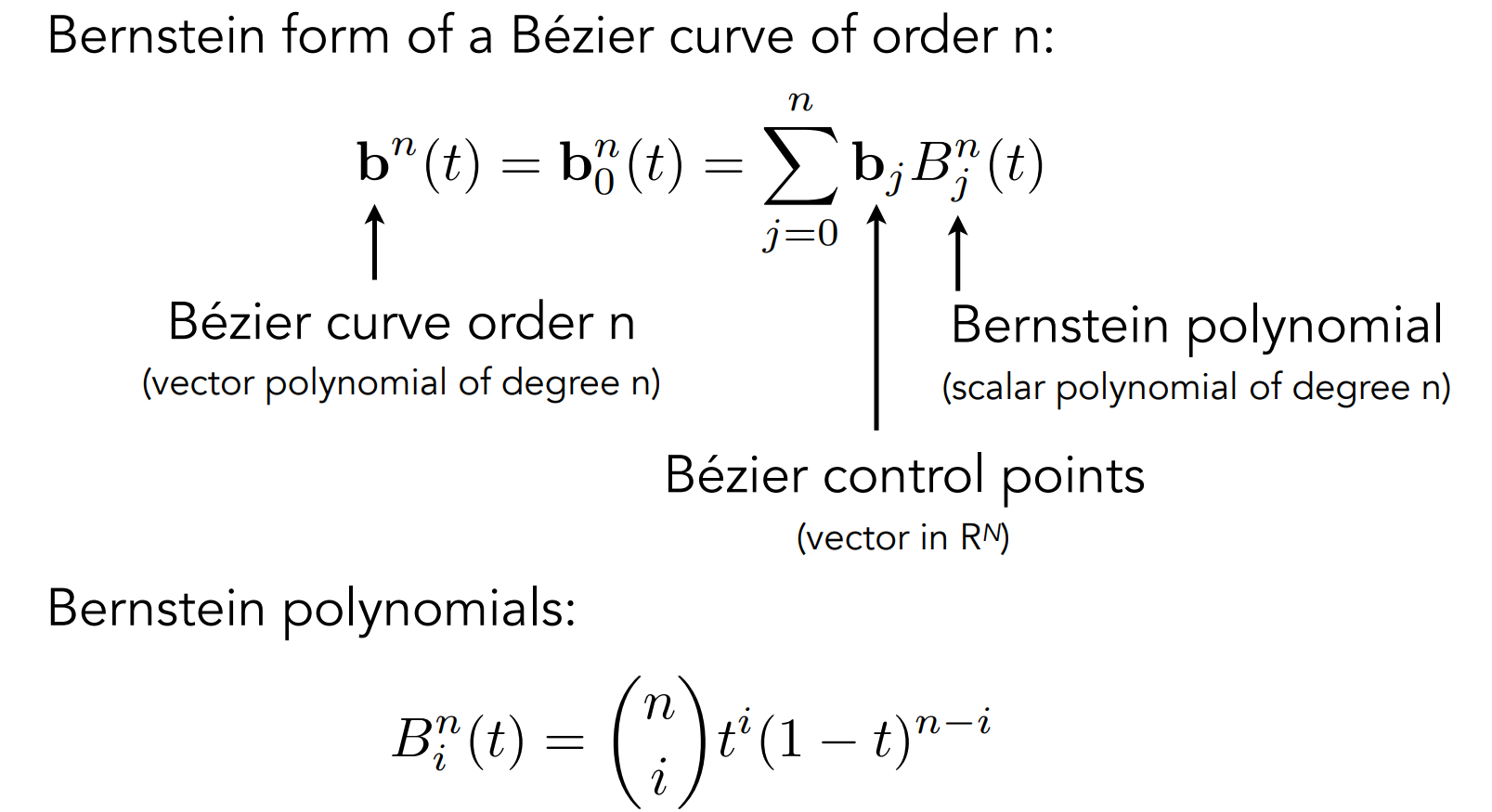作业三
作业
贝塞尔曲线
贝塞尔曲线是通过控制点来绘制的曲线
其完全由其控制点决定其形状 n个控制点对应着n-1阶的贝塞尔曲线
用t[0.0..1.0]作为参数来细分曲线

很明显我们可以通过递归来计算它

代码
cv::Point2f recursive_bezier(const std::vector<cv::Point2f> &control_points, float t)
{
// TODO: Implement de Casteljau's algorithm
if (control_points.size() <= 1) {
return control_points[0];
}
std::vector<cv::Point2f> points;
for (size_t i = 0; i + 1 < control_points.size(); i++) {
auto cur_point = control_points[i];
auto next_point = control_points[i + 1];
auto diff_point = next_point - cur_point;
// auto iterate_point = cur_point * t + next_point * (1 - t);
auto iterate_point = cur_point + diff_point * t;
points.emplace_back(iterate_point);
}
return recursive_bezier(points, t);
}
void bezier(const std::vector<cv::Point2f> &control_points, cv::Mat &window)
{
// TODO: Iterate through all t = 0 to t = 1 with small steps, and call de Casteljau's
// recursive Bezier algorithm.
for (double t = 0.0; t <= 1.0; t += 0.001) {
auto res_point = recursive_bezier(control_points, t);
window.at<cv::Vec3b>(res_point)[1] = 255;
}
}也可以通过多项式公式计算 公式如下图

代码
void naive_bezier(const std::vector<cv::Point2f> &points, cv::Mat &window)
{
auto &p_0 = points[0];
auto &p_1 = points[1];
auto &p_2 = points[2];
auto &p_3 = points[3];
for (double t = 0.0; t <= 1.0; t += 0.001)
{
auto point = std::pow(1 - t, 3) * p_0 + 3 * t * std::pow(1 - t, 2) * p_1 +
3 * std::pow(t, 2) * (1 - t) * p_2 + std::pow(t, 3) * p_3;
window.at<cv::Vec3b>(point.y, point.x)[2] = 255;
}
}
此处评论已关闭